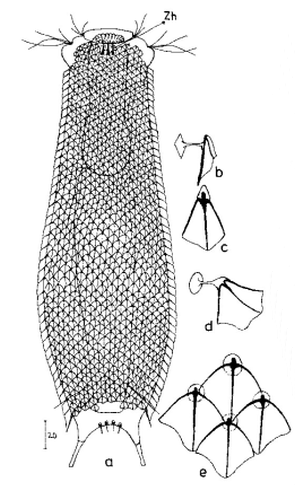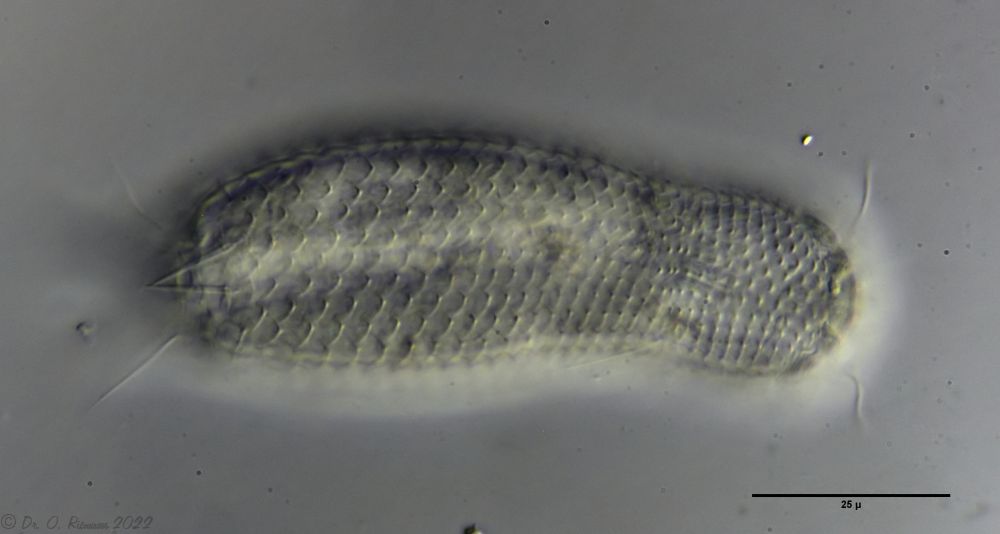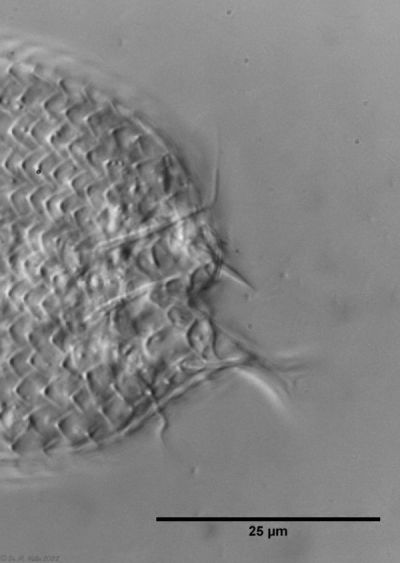Aspidiophorus tetrachaetus

110 µm - 137 µm
Width:
30 µm - 35 µm
Width of the head ( five-lobed ):
24 µm - 27 µm
Width of the neck:
19 µm - 20 µm
Length of the furca:
11 µm - 16 µm
Adhessive tubes (Very thin):
75% of furca
Pharyx ( dumbbell-shaped ):
25 µm - 30 µm
Diameter of the mouth ( around ):
6 µm
Dorsal scales:
15-17 rows of 33-40 petiole scales each; end plates unkeeled 2-5µm, rounded distally and proximally; base of toes naked; 2 pairs of thick spines (8-10µm and 4-5µm) on oval scales with two keels.
Ventral scales:
2 terminal keels (7.5-11µm); in gut region 8-9 rows of tiny keels, otherwise naked
Oecology:
montane lake
Similar species:
delimitable by spines
Particularities:
2 pairs of spines at the rear end
A. tetrachaetus is a very rare gastrotrich, so far confirmed only for Poland.

A. tetrachaetus: dorsal ((c) Ole Riemann)
The dorsum of the animals is covered with relatively large, unkeeled and rounded pedunculate scales, which do not continue to the base of the toes at the posterior end. A pair of large spines is conspicuous at the posterior end of the scale coat.

A. tetrachaetus: t.s. ( Ole Riemann)
In the cross section the structure of the petiole scales can be seen well.

A. tetrachaetus: ventral (copyright: Ole Riemann)
The ventral intermediate field of the animals is covered only in the intestinal region by 8-9 longitudinal rows of small keels. The pharyngeal region is naked. Two terminal keels form the posterior shoot of the ventral scaling.

A. tetrachaetus: two pairs of spines at the hind end.
Only a closer look at the dorsal toe base of the animals reveals two additional, smaller spines.

A. tetrachaetus: single tooth in oral cavity.
Contrary to the description in the literature, a single tooth can be seen protruding asymmetrically from the oral cavity in the animals at Sima Moor.